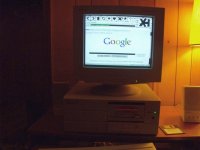Update, for MBBrutman as we discussed this subject yesterday.
I did use a 3Com 3C509B (ref. 3C509B-TPO).
This is a 16bits cards, but it works very well on 8bits PCs.
I did chose this card because the road was already paved : an article was available, and tools to configure this particular version of the card 3C509
B had been compiled for 8088 and 8086.
This simplifies the problem, as other 16bits cards, even if they can be operated in 8bits, often ship with config tools that are not 8bits compatible.
I do also have a 3C509 (not -B). I was unable to use this util to configure it. So I prefered to buy the good version of the card instead of trying to find some old machine with ISA slots.
The config can't be skipped (unless you're very lucky) as there are no jumpers on those boards : I/O ports and other options are all set via the 3Com config tool.
The page is there (article + driver and setup tool download) :
GitHub - hackerb9/3C509B-nestor: Driver for 3COM 3C509B cards in 8-bit IBM PC/XT slots
The article goes all the way even to configure MBBrutman's MTCP tools.
I also bought a TP-Link travel router (
TP-Link Nano Routeur 750Mbps Wi-Fi AC, Support mode Répéteur/ mode Point d'accès/ mode Routeur/ mode Hotspot/ mode Client, 1 Port Ethernet, 1 Port USB, Idéal pour la maison et le voyage (TL-WR902AC): Amazon.fr: Informatique), as my computer is far from the house's wired network.
I configured it in client mode (acts as a RJ45 one port switch on one side and connects on the house's wifi on the other... for the PC, it's transparent as it's connected on a RJ45 port to the house's network).
I used a modern computer to do the basic configuration of the router, as it only feature a graphic interface which obviously couldn't be displayed on my XT.
I'll post some pics lated, but for now I used DHCP (of course), NTP, the FTP client (which is quite fun to use instead of moving aroune the PCs CF card) and the IRC client. The network connection seems to be very stable !

